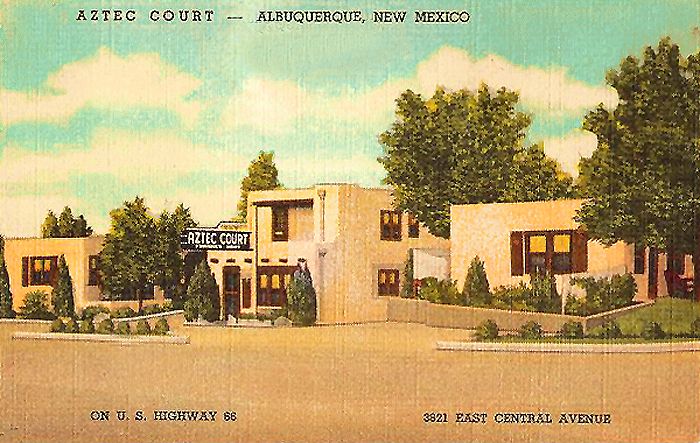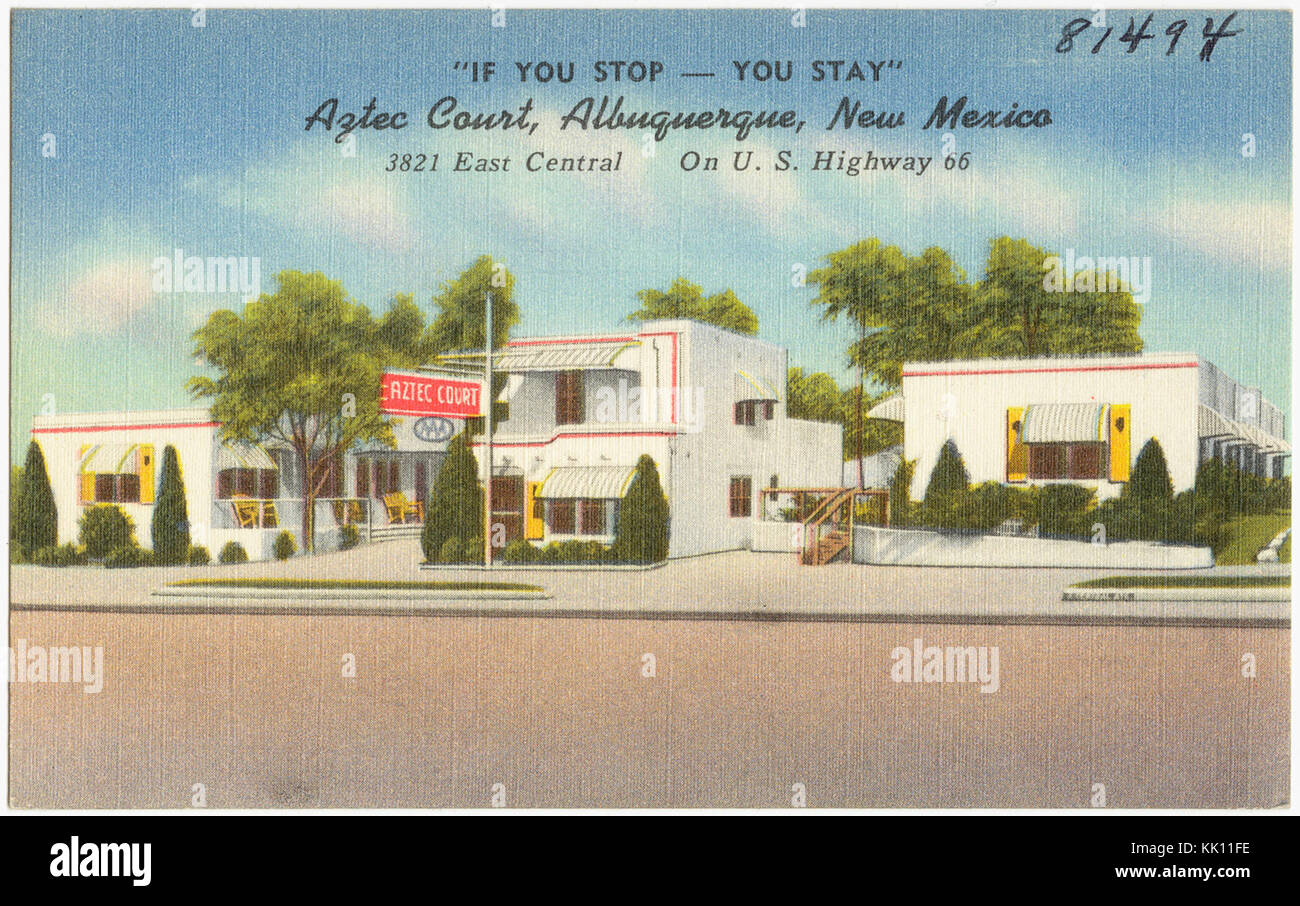
Echoes of Empire: The Curious Case of Aztec Court, Albuquerque
In the vast, sun-drenched landscape of New Mexico, where ancient Pueblo traditions meld with Spanish colonial legacies and the rugged individualism of the American West, street names often tell a story. They whisper of indigenous roots, pioneering spirit, or perhaps a romanticized vision of the past. But tucked away in the sprawling urban fabric of Albuquerque, a quiet residential street bears a name that immediately piques curiosity: Aztec Court. It’s a name that conjures images of Mesoamerican pyramids, obsidian blades, and a sophisticated empire far removed, geographically and historically, from the high desert of the American Southwest.
This seemingly anachronistic nomenclature isn’t an isolated incident in American urban planning, yet its presence in a state so profoundly shaped by its own distinct Native American and Hispanic heritage invites a deeper look. Aztec Court is more than just a street; it’s a quiet testament to the enduring power of ancient mythologies, the sometimes-arbitrary nature of urban development, and the fascinating ways in which history, real or imagined, permeates our modern landscape.
The Historical Disconnect: Aztecs in the Land of Enchantment?

To understand the intrigue of Aztec Court, one must first address the obvious historical anomaly. The Aztec Empire, with its capital Tenochtitlan (modern-day Mexico City), flourished in central Mexico from the 14th to the early 16th century. Their influence extended across a significant portion of Mesoamerica, marked by impressive architectural feats, complex social structures, advanced astronomical knowledge, and a rich, often brutal, religious cosmology.
New Mexico, meanwhile, boasts a distinct and equally ancient indigenous history. Its landscape is dotted with the ancestral homes of the Pueblo people, whose multi-story adobe dwellings and intricate irrigation systems predate European arrival by centuries. Sites like Chaco Canyon, Mesa Verde (just north in Colorado, but part of the broader ancestral Pueblo world), and the living pueblos of Acoma, Taos, and Zuni stand as monumental reminders of a vibrant and resilient culture that developed independently of the Aztec world. The Navajo and Apache peoples also carved out their own distinct histories and traditions across this vast territory.
"There’s absolutely no historical or archaeological evidence of an Aztec presence in what is now New Mexico," asserts Dr. Elena Ramirez, a historian specializing in Southwestern Indigenous cultures at the University of New Mexico. "The cultures of Mesoamerica and the American Southwest had some ancient trade connections, particularly regarding things like turquoise, but they were distinct civilizations. To name a street ‘Aztec’ here is to superimpose a foreign narrative onto a place with its own incredibly rich and complex indigenous story."
So, if there’s no direct historical link, why Aztec Court? The answer lies not in ancient migration patterns, but in the more recent currents of American urban expansion, romanticized views of the past, and the simple human tendency to find names that sound grand, exotic, or evoke a sense of bygone majesty.
The Allure of the Exotic: Naming Conventions and the American Imagination
The mid-20th century, a period of significant post-war growth in cities like Albuquerque, saw a boom in suburban development. Developers, often looking for appealing and memorable names for their new subdivisions and streets, frequently turned to themes that resonated with a broader public. This could be local flora and fauna, the names of pioneers, or, perhaps most evocatively, references to ancient civilizations.
The Aztecs, even without a direct connection to the American Southwest, held a powerful sway in the popular imagination. Their empire was known for its wealth, its advanced cities, its formidable warriors, and its dramatic fall to the Spanish conquistadors. For many, the name "Aztec" conjured images of mystery, power, and a sophisticated, albeit vanished, world. It was a name that sounded impressive, exotic, and carried a certain weight – qualities often desirable for marketing new homes.
"It’s a common phenomenon, particularly in the mid-century," explains David Montoya, an urban planning consultant who has studied Albuquerque’s historical growth. "Developers weren’t necessarily historians; they were marketers. Names like ‘Aztec Court’ or ‘Pyramid Lane’ or ‘Nile Drive’ tapped into a shared cultural lexicon, a fascination with the ancient world. It lent a certain cachet, a sense of gravitas, even if it was geographically inaccurate."

This trend wasn’t unique to Albuquerque. Across the United States, one can find streets named after Egyptian pharaohs, Roman emperors, or Greek gods, often in neighborhoods far removed from any genuine historical association. Aztec Court, in this context, becomes less an error and more a reflection of a particular era’s approach to naming and identity.
Life on Aztec Court: A Quiet Residential Reality
Physically, Aztec Court itself is unremarkable in the best possible way. It’s a quiet cul-de-sac, lined with single-family homes characteristic of mid-to-late 20th-century suburban architecture – stucco exteriors, pitched roofs, small front yards, and carports or garages. Children ride bikes, neighbors tend to their gardens, and the only pyramids in sight are the distant, majestic peaks of the Sandia Mountains, glowing fiery red at sunset.
Sarah Chen, who has lived on Aztec Court for nearly twenty years, finds the name an amusing quirk. "When we first moved here, I remember thinking, ‘Aztec Court? That’s interesting for New Mexico,’" she chuckles. "But it’s just a name. It’s a peaceful, friendly street. We don’t have any ancient rituals or feathered serpent gods around here, just good neighbors and a lot of sunshine."
Her sentiment reflects the lived reality of many residents. The name, while historically incongruous, has become part of the everyday tapestry. It doesn’t define their lives, but it adds a subtle layer of narrative to their address. It’s a conversation starter, a curious footnote in the story of their home.
Albuquerque’s Layered Identity: Beyond the Name
Albuquerque itself is a city of layered identities. It sits on the banks of the Rio Grande, a lifeline through the desert, and is flanked by the dramatic Sandia Mountains to the east. Its Old Town, established in 1706 by Spanish colonists, retains a charming adobe core, echoing centuries of Hispanic influence. The city is also a gateway to numerous Native American pueblos, whose presence is felt in the art, cuisine, and spiritual landscape of the region. Route 66, the iconic "Mother Road," cuts through its heart, adding a layer of mid-century Americana.
In such a rich and complex environment, Aztec Court’s name can be seen as another thread in a multifaceted tapestry. It’s a reminder that cultural influences, even those adopted and adapted from afar, become part of a place’s story. It might not be historically accurate, but it’s part of the human story of how we name, organize, and perceive our world.
The city has, in recent decades, become more conscious of its naming conventions, often opting for names that more directly reflect its genuine heritage. New developments might feature names drawn from local flora (Yucca, Ocotillo), geological features (Mesa, Arroyo), or authentic indigenous languages (Kewa, Tewa). This shift reflects a broader cultural sensitivity and a desire to honor the actual history embedded in the land.
The Power of a Name: Echoes and Reverberations
Ultimately, Aztec Court stands as a fascinating case study in the power and paradox of naming. It highlights how even seemingly arbitrary choices can carry symbolic weight, sparking curiosity and inviting reflection. It forces us to consider the distinction between historical accuracy and cultural resonance, between a genuine connection to the past and a romanticized appropriation of it.
For the casual observer, Aztec Court is simply a street sign. For the historian, it’s a window into mid-century urban development and the American fascination with ancient civilizations. For the resident, it’s home, a place of quiet community under the vast New Mexico sky.
And perhaps, in its own way, Aztec Court, Albuquerque, serves as a subtle reminder of the enduring human impulse to connect with something grander, something ancient, even when that connection is more imagined than real. It’s a whisper of empire in a land that forged its own, distinct empires, a quiet street that, despite its name, remains quintessentially New Mexican in its everyday reality. It is a place where the echoes of a distant civilization merge with the daily rhythms of life, under the watchful gaze of the Sandia Mountains, a silent testament to the layered, sometimes contradictory, narratives that shape our modern world.


